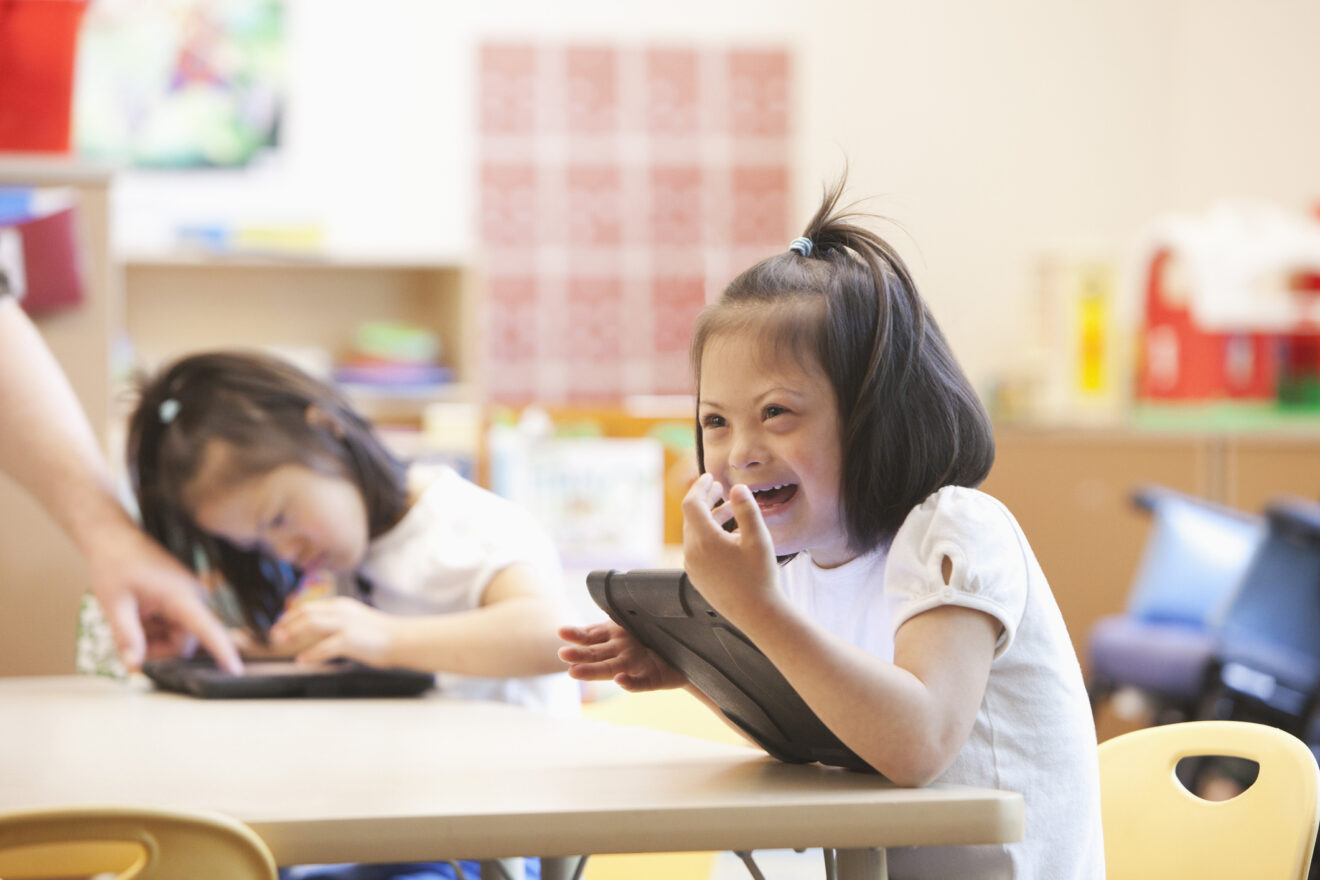Bringing students from different demographics with different challenges together to learn in the same classroom helps all of them grow — both academically and in many non-academic ways. This is especially true when it comes to mainstreaming students with disabilities.

I teach a self-contained classroom of students in grades three through five with moderate to severe disabilities at San Altos Elementary School in Lemon Grove, Calif. All of my students have individualized education programs, aka IEPs. Their disabilities include cerebral palsy, autism, Down syndrome, cognitive disabilities, speech-language impairments, attention-deficit/hyperactivity disorder, traumatic brain injuries and more.
I have a total of 10 students supported by two full-time aides and one part-time aide. Since I started teaching 17 years ago, I’ve noticed that the number of students with disabilities has increased. The demographics have changed, and more and more of my students are non-verbal. Because of this, I’m having to find new ways to teach them. Student independence is always my number one goal, but it isn’t always possible and depends on the severity of my students’ disabilities.
In addition to working on students’ academics, I also work on building students’ confidence, developing language and social skills and modeling behavior. A great way to do this is by having them attend mainstream classrooms for part of the day. Six of my 10 students do this. It’s a critical part of their education and allows us to teach them in the least restrictive environment. It greatly benefits those students — as well as their general education peers.
Here are some strategies I use to support my students and some things to consider when mainstreaming students with moderate to severe disabilities.
Using data to pinpoint instruction
Assessment data can be an amazing resource to support students with disabilities. At San Altos Elementary, all teachers use the i-Ready online assessment and instruction program to diagnose their students three times a year and provide personalized instruction based on specific growth needs. This has been a huge help to me personally in working toward meeting each child’s academic needs. Each week I review my online instruction report. I adjust lessons as needed and occasionally assign additional lessons to supplement a skill or address an area of need stated in my students’ IEPs.
Programs like this can open new opportunities for students to learn in a less restrictive environment while using the same curriculum as their general education peers. For instance, one of my students might be five grades below grade level, but none of the other students can tell what level my student is on when they’re all using the online program because it looks the same for all students. Most of my students are non-verbal, and since none of the students are talking during these lessons, it’s nice for my students to look and feel like everyone else while working on the program. This shared experience among peers helps build that sense of community and supports my students’ self-esteem. It also provides my students with an opportunity to fit in in places previously unavailable to them.
Creating a sense of pride through celebrations
A great way to support students with disabilities — and all students — is to recognize and celebrate accomplishments. At my school, we don’t just focus on test scores; we focus on growth. We hold restorative circles to celebrate student growth (lesson time-on-task, passing a hard lesson, hitting a growth goal, etc.). At the end of the year, my students may still be several grades below grade level, but they also may have grown two grade levels during the school year. Our school tracks students’ data and gives awards not only for top scores in English language arts and math, but also for top growth. I have so much pride when my students get to show off their academic success using the same lingo (“I went up 62 points in mat!”’) as the other students.
Teaching functional life skills
Success for my students isn’t just about academics. In our class we strongly focus on functional life skills. We’re making friendships, learning greetings and making the type of growth that might not necessarily show as academic progress on a student’s IEP. But it’s growth that is nonetheless important and needed. This includes social skills such as how far to stand from another child in line and how to follow whole group instruction. Being in a mainstream classroom is also a great opportunity for my students to learn from their general education peers’ modeling. The other students can model the behavior of going to sit on the floor for a lesson or standing in line. Without mainstreaming, these opportunities are lost.
Teaching these life skills — for instance, just something like covering a cough — is huge. It’s not academics, but it keeps them healthy. Or teaching a student how to push in their chair instead of doing it for them. It’s always great to see students start to walk in line, which doesn’t happen at the beginning of the year.
A mother came in and said her son was independent in the bathroom at school but not at home. She asked what we were doing. I showed her the picture symbols we use that walk students through what to do in the bathroom. We talked about how she can do this at home. It was a huge help for her, and now she can reinforce those skills at home. Having parents as partners is so important to my students’ success.
Talking about identity
We use culturally and historically responsive teaching units that are focused on identity. For example, we might ask students, “What does it mean to you as a San Diegan, as an African American, as a boy, to be learning about the indigenous people?” For my students with disabilities, we might ask them about their likes and dislikes — for instance, which character they like best in animated films. We talk about different types of homes or foods. We have their peers ask them yes and no questions about things like games, etc. This helps our students build their own sense of identity and also practice communication skills.
Having buddies when mainstreaming
Our school has a buddy system where certain general education students spend a part of their day working side by side with my students helping them with our online learning program. Many of these “buddy” students have behavior challenges. But when they enter my classroom, it becomes a safe space for them, and they rise to the occasion and act as role models for my students. They are developing communication and leadership skills and learning about respect and friendship. They take such pride in being helpers, and I couldn’t do my job without them.
For example, the buddies teach my students test-taking skills, or they read to my students. I’ve seen an increase in on-task behavior from my students after working with their buddies.
The more the general education students get to know my students, the more my students feel included. The self-esteem piece and the feeling of belonging is huge, and it’s authentic. Now my students are saying hi when they see their buddies at lunch.
Mainstreaming students with disabilities, when done in the right way and with the right supports, is an amazing way to provide inclusive education and support the academic and non-academic needs of all students.
I love my job. When I see a student who’s been working on greetings and hasn’t made a lot of progress, and then a fifth grader comes into the classroom and says, “Hey, Cam,” and he waves back, it means so much. The general education students might never have met someone with a disability before, but exposing them to students unlike them is changing the dynamics of the way students learn today.
Amanda Kipnis, M.Ed., M.S., is a specialized academic instruction teacher for grades three through five at San Altos Elementary School in Lemon Grove, Calif., which uses the i-Ready program. She has more than 15 years of experience in education. She is a member of the Curriculum Associates Extraordinary Educators Class of 2020.
Opinions expressed by SmartBrief contributors are their own.
_________________________
Subscribe to SmartBrief’s FREE email newsletter to see the latest hot topics on special education. It’s among SmartBrief’s more than 250 industry-focused newsletters.
